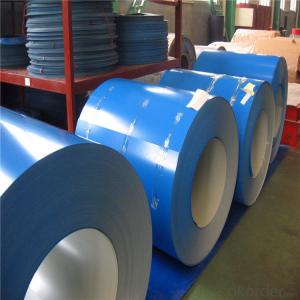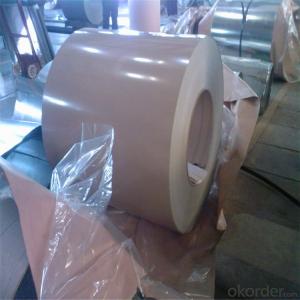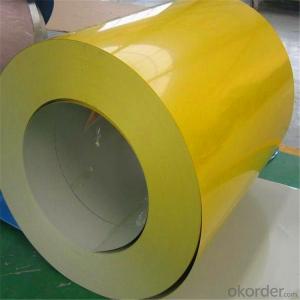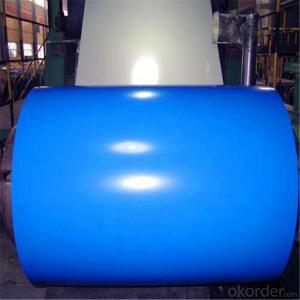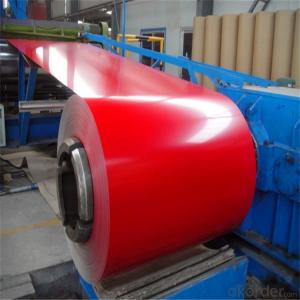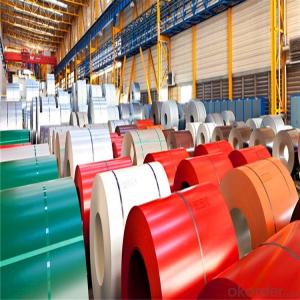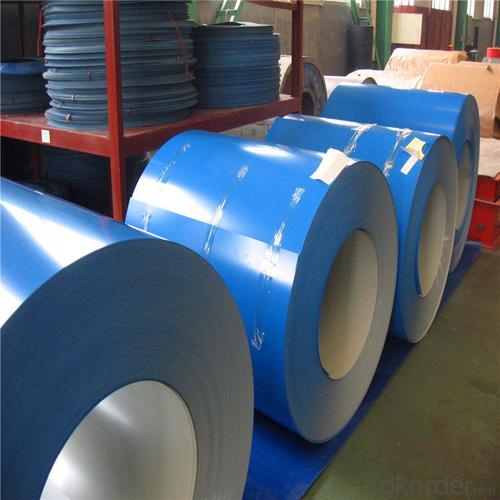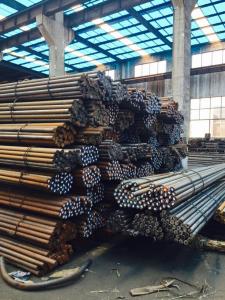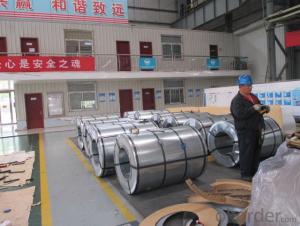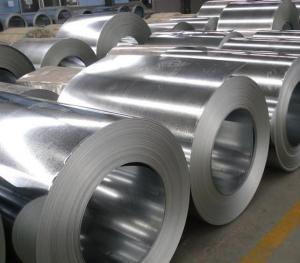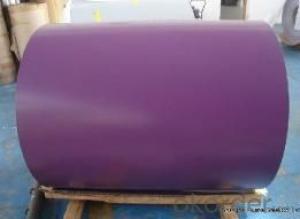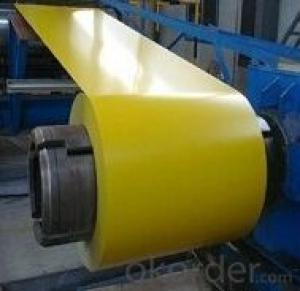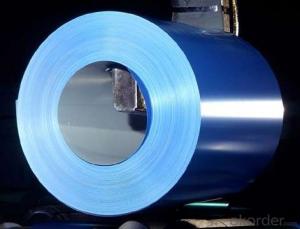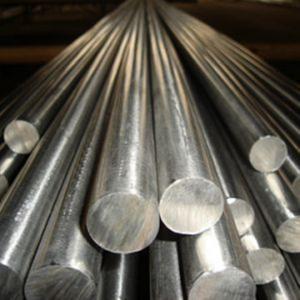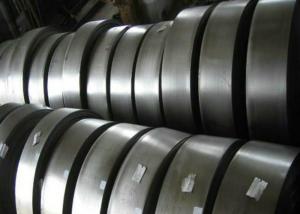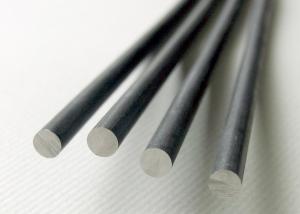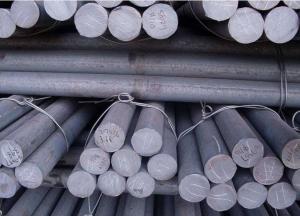High Strength Color Coated Galvanized Steel Coils SGCC PPGI
- Loading Port:
- Tianjin
- Payment Terms:
- TT OR LC
- Min Order Qty:
- 100 m.t.
- Supply Capability:
- 50000 m.t./month
OKorder Service Pledge
OKorder Financial Service
You Might Also Like
Specification
High Strength Color Coated Galvanized Steel Coils SGCC PPGI
Description of High Strength Color Coated Galvanized Steel Coils SGCC PPGI
Product | PPGI/PPGL |
Capacity | 5,000 tons/month |
Base material | Hot dipped galvanized steel |
Thickness | 0.2-2.0mm |
Width | 600-1250mm(according to your need) |
Coil Weight | 3-6tons |
Quality | SGCC, DX51D |
Color | RAL No. or customers samples’ color |
Zinc-coating | 30g/m2-180g/m2 |
Coil ID | 508mm/610mm |
Technique | Cold rolled—hot dipped galvanized—color coated |
Painting | Top painting:15~25μm |
Back painting: 6~10μm | |
Tolerance | Thickness: +/-0.02mm |
Width:+/-2mm | |
Shipment time | within 15-45 workdays |
Payment | T/T, L/C at sight |
Packing | Standard export packing |
The special order can be negotiated. | |
Application of High Strength Color Coated Galvanized Steel Coils SGCC PPGI
APPLICATION OF OUR PREPAINTED STEEL | ||||||||||
Construction | Outside | Workshop,agricultural warehouse,residential precast unit | ||||||||
corrugated roof,roller shutter door,rainwater drainage pipe,retailer booth | ||||||||||
Inside | Door,doorcase,light steel roof stucture,folding screen,elevator,stairway,ven gutter,Construction Wall | |||||||||
Electrical applicance | Refrigerator,washer,switch cabnet,instrument cabinet,air conditioning,micro-wave owen,bread maker | |||||||||
Fuiniture | Central heating slice,lampshade,chifforobe,desk,bed,locker,bookself | |||||||||
Carrying trade | Exterior decoration of auto and train,clapboard,container,isolation lairage,isolation board | |||||||||
Qthers | Writing panel,garbagecan,billboard,timekeeper,typewriter,instrument panel,weight sensor,photographic equipment | |||||||||
Products Show of High Strength Color Coated Galvanized Steel Coils SGCC PPGI
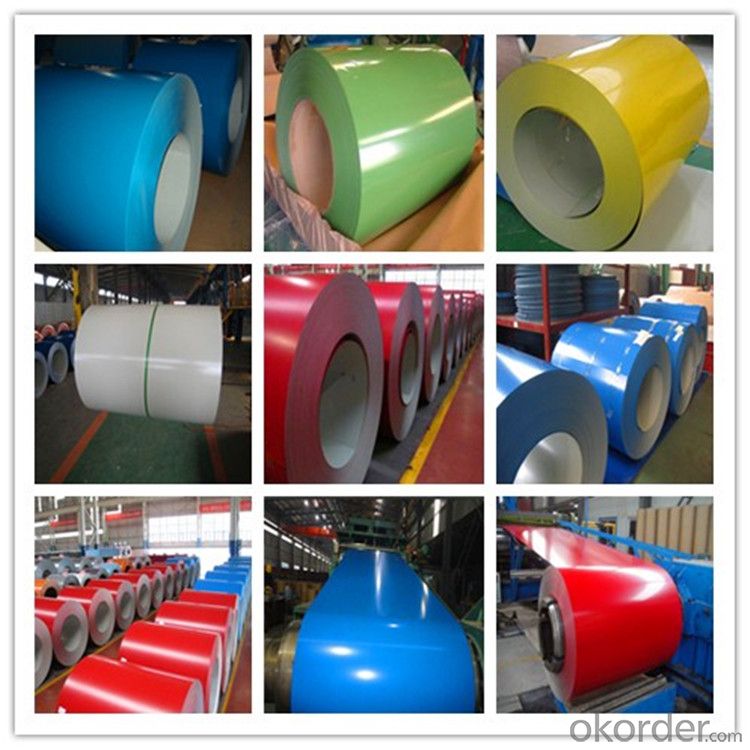
Product Advantages
1.With nearly 20 years experience in prepainted steel, accommodate different marketdemands. | ||||||||||||||
2.'Quality first, service first' is our business aim; 'The good faith get respect,cast quality market' is our Business philosophy . | ||||||||||||||
3.Having two series producttion line,with the abbual production capacity of 240000 tons. | ||||||||||||||
4.Exceed International ISO9001:2008&ISO14001:2004 quality and environmental standards | ||||||||||||||
5.Meet with ROHS standard |
Company Information
CNBM International Corporation is the most important trading platform of CNBM group.
Whith its advantages, CNBM International are mainly concentrate on Cement, Glass, Iron and Steel, Ceramics industries and devotes herself for supplying high qulity series of refractories as well as technical consultancies and logistics solutions.

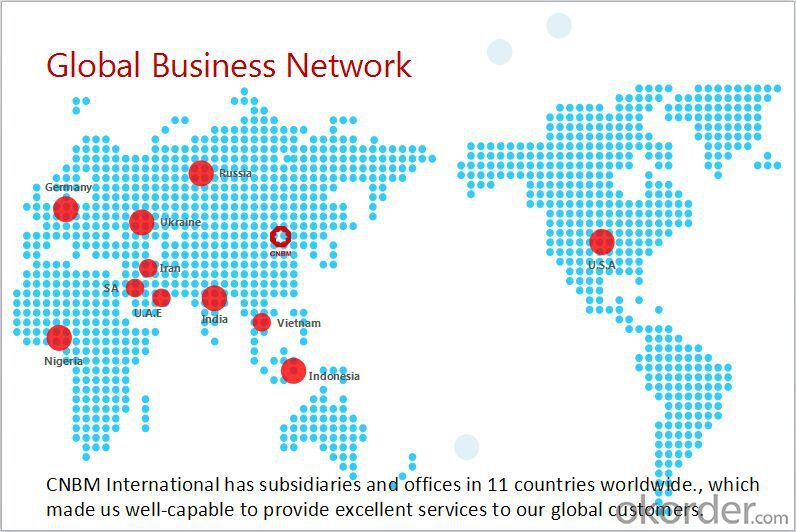
F A Q
1, Your advantages?
professional products inquiry, products knowledge train (for agents), smooth goods delivery, excellent customer solution proposale
2, Test & Certificate?
SGS test is available, customer inspection before shipping is welcome, third party inspection is no problem
3, Factory or Trading Company?
CNBM is a trading company but we have so many protocol factories and CNBM works as a trading department of these factories. Also CNBM is the holding company of many factories.
4, Payment Terms?
30% TT as deposit and 70% before delivery.
Irrevocable L/C at sight.
5, Trading Terms?
EXW, FOB, CIF, FFR, CNF
6, After-sale Service?
CNBM provides the services and support you need for every step of our cooperation. We're the business partner you can trust.
For any problem, please kindly contact us at any your convenient time.
We'll reply you in our first priority within 24 hours.
- Q: How is special steel used in the aerospace industry?
- Special steel is used in the aerospace industry for various applications, including the manufacturing of critical components such as jet engines, landing gear, and airframe structures. Due to its exceptional strength, corrosion resistance, and heat resistance properties, special steel ensures the safety, durability, and performance of aircraft while operating under extreme conditions.
- Q: What are the different methods for improving the machinability of special steel?
- There are several methods for improving the machinability of special steel, including: 1. Alloying: Adding elements such as sulfur, lead, or selenium to the steel composition can enhance machinability by forming brittle compounds that break up chips during machining. 2. Heat treatment: Proper heat treatment, such as annealing or stress relieving, can reduce hardness and improve machinability. 3. Cutting tool selection: Choosing appropriate cutting tools with the right geometry, coatings, and materials can significantly enhance machinability. 4. Lubrication: Using suitable cutting fluids or lubricants during machining can reduce friction, heat generation, and tool wear, thereby improving machinability. 5. Machining parameters optimization: Adjusting cutting speed, feed rate, and depth of cut can optimize chip formation, reduce cutting forces, and enhance machinability. 6. Surface treatments: Applying surface coatings or treatments, such as nitriding or carburizing, can improve the wear resistance and reduce friction, leading to improved machinability. 7. Material selection: Selecting alternative steel grades with inherently better machinability characteristics can be an effective method for improving machinability.
- Q: How does stainless steel contribute to the production of medical implants?
- Stainless steel contributes to the production of medical implants by providing a highly durable and corrosion-resistant material that is compatible with the human body. It is used in various implants such as joint replacements, dental implants, and surgical instruments due to its strength, biocompatibility, and ability to withstand sterilization processes.
- Q: What are the different surface cleaning methods for special steel?
- There are several surface cleaning methods that can be used for special steel to maintain its quality and appearance. 1. Mechanical Cleaning: This method involves the use of mechanical tools such as wire brushes, sandpaper, or abrasive pads to remove dirt, rust, or other contaminants from the surface of the steel. It is effective for removing loose particles and light stains but may not be suitable for deep stains or stubborn dirt. 2. Chemical Cleaning: Chemical cleaning is a common method used for special steel surfaces. It involves the use of specific chemical solutions that are applied to the surface to dissolve and remove contaminants. Different chemicals are used depending on the type of stain or dirt present. Acid-based cleaners are often used for rust removal, while alkaline cleaners are effective for removing grease or oil stains. 3. Electrochemical Cleaning: This method utilizes an electrical current to remove contaminants from the surface of the steel. It involves placing the steel in an electrolyte solution and applying a direct current, causing the contaminants to dissolve and separate from the surface. This method is effective for removing rust or corrosion but should be carefully monitored to prevent damage to the steel. 4. High-Pressure Water Cleaning: High-pressure water cleaning, also known as water blasting, involves the use of pressurized water to remove dirt, paint, or other contaminants from the steel surface. This method is effective for removing heavy stains or coatings and is commonly used in industrial cleaning processes. 5. Steam Cleaning: Steam cleaning is a non-abrasive method that utilizes high-temperature steam to loosen and remove dirt, grease, or other contaminants from the steel surface. It is a gentle method that can effectively clean delicate or sensitive surfaces without causing damage. It is important to note that the appropriate surface cleaning method for special steel depends on the specific type of steel, the nature of the contaminants, and the desired level of cleaning. It is recommended to consult with experts or follow manufacturer guidelines to ensure the best cleaning method is used for a particular type of special steel.
- Q: How does special steel contribute to the automotive noise reduction?
- Special steel contributes to automotive noise reduction in several ways. Firstly, it is durable and strong, allowing for the construction of thinner and lighter components. This reduces the overall weight of the vehicle, resulting in reduced road and engine noise. Additionally, special steel has excellent vibration-damping properties, which helps absorb and minimize noise generated by the engine, suspension, and other moving parts. The use of special steel in the design of automotive structures and panels also helps reduce noise transmission from the outside environment into the cabin, providing a quieter and more comfortable driving experience for passengers.
- Q: How does special steel comply with international standards?
- Special steel complies with international standards through a rigorous quality control process that involves testing the material for its chemical composition, mechanical properties, and dimensional accuracy. These standards, such as ISO, ASTM, and DIN, ensure that the steel meets the required specifications and performance criteria for various applications. Manufacturers also follow strict production guidelines and undergo regular audits to maintain compliance with these international standards.
- Q: What are the specific requirements for special steel used in the aerospace fastener industry?
- The aerospace fastener industry requires special steel that meets specific requirements in order to ensure the safety, reliability, and performance of aircraft components. These requirements include: 1. High strength: Special steel used in aerospace fasteners must have exceptional strength to withstand the extreme forces and stresses experienced during flight. This is crucial for maintaining the structural integrity of aircraft components. 2. Corrosion resistance: Aerospace fasteners are exposed to various environmental conditions, including moisture, high temperatures, and chemicals. Therefore, the steel used must possess excellent corrosion resistance properties to prevent degradation and maintain the longevity of the fasteners. 3. Fatigue resistance: As aircraft components undergo repeated loading and unloading cycles during their lifetime, the special steel used in aerospace fasteners must exhibit exceptional fatigue resistance. This ensures that the fasteners can withstand the cyclic loading without fracturing or experiencing any structural failures. 4. Temperature resistance: Aerospace fasteners are subject to extreme temperature variations, ranging from sub-zero temperatures at high altitudes to elevated temperatures near engines. The steel used should have excellent temperature resistance to maintain its mechanical properties under these conditions. 5. Lightweight: In the aerospace industry, weight reduction is crucial to improve fuel efficiency and increase the payload capacity of aircraft. Therefore, special steel used in aerospace fasteners should be lightweight without compromising on strength and other necessary properties. 6. Non-magnetic properties: Some aerospace applications require non-magnetic fasteners to prevent interference with sensitive electronic equipment, such as avionics and navigation systems. Therefore, the special steel used in such cases must exhibit non-magnetic properties. 7. Compliance with industry standards: Special steel used in the aerospace fastener industry must meet the stringent standards and specifications set by regulatory bodies, such as the International Organization for Standardization (ISO) and the National Aerospace and Defense Contractors Accreditation Program (NADCAP). Compliance with these standards ensures the quality and reliability of the fasteners. Overall, the specific requirements for special steel used in the aerospace fastener industry encompass high strength, corrosion resistance, fatigue resistance, temperature resistance, lightweight properties, non-magnetic characteristics, and compliance with industry standards. Meeting these requirements is essential to ensure the safety and performance of aircraft components.
- Q: What are the different corrosion testing methods used for special steel?
- To assess and evaluate the resistance of special steel against corrosion, various testing methods are utilized. These include: 1. Salt Spray Testing: This method involves subjecting the special steel to a controlled mist of saltwater. The steel specimen is placed in a chamber where it is exposed to the mist for a specific duration. The resulting corrosion is visually evaluated and compared to established criteria. 2. Electrochemical Testing: To study the corrosion behavior of special steel, electrochemical techniques like potentiodynamic polarization and electrochemical impedance spectroscopy (EIS) are commonly employed. These methods measure the steel's current and potential responses in different corrosive solutions, providing information on corrosion rate and other electrochemical parameters. 3. Immersion Testing: In this method, the special steel is immersed in a specific corrosive solution for a predetermined period. The solution can be acidic, alkaline, or even simulated seawater, depending on the intended application. The corrosion-induced weight loss or surface damage is then measured and compared to assess the steel's corrosion resistance. 4. Crevice Corrosion Testing: This technique focuses on evaluating the susceptibility of special steel to crevice corrosion, which occurs in confined spaces or gaps. By creating a crevice between the steel specimen and another material and introducing a corrosive solution, the severity of crevice corrosion can be assessed. This can be done by measuring the depth of attack or using electrochemical methods. 5. Intergranular Corrosion Testing: Special steel is sometimes prone to intergranular corrosion, which occurs along the grain boundaries. Tests like the Strauss test or the Huey test are conducted to determine the steel's susceptibility to this form of corrosion. These tests involve immersing the steel in a corrosive solution at elevated temperatures and assessing the extent of intergranular attack. 6. Accelerated Testing: Accelerated corrosion testing methods aim to simulate the long-term effects of corrosion within a shorter time frame. Techniques like cyclic corrosion testing, which involve alternating exposure to different corrosive environments, can provide valuable insights into the steel's performance under realistic conditions in a shorter period. It should be noted that the selection of the corrosion testing method depends on the specific requirements, intended application, and environmental factors to which the special steel will be exposed.
- Q: What are the common heat treatment methods used for special steel?
- There are several common heat treatment methods used for special steel to improve its mechanical properties and enhance its performance. Some of these methods include: 1. Annealing: This process involves heating the steel to a specific temperature and then cooling it slowly to relieve internal stresses and create a refined microstructure. Annealing helps to improve the machinability and ductility of the steel. 2. Normalizing: Normalizing is a heat treatment method that involves heating the steel to a temperature above its critical point and then cooling it in still air. This process helps to refine the grain structure of the steel, improve its toughness, and enhance its strength. 3. Quenching: Quenching is a rapid cooling process that involves immersing the steel in a quenching medium, such as water, oil, or polymer. This method is used to increase the hardness and strength of the steel by forming a hard martensitic structure. However, quenching can also introduce internal stresses and reduce the steel's toughness, so it is often followed by tempering. 4. Tempering: Tempering is a heat treatment method that involves reheating the quenched steel to a specific temperature and then cooling it gradually. This process helps to relieve internal stresses, reduce hardness, and improve the toughness and ductility of the steel. Tempering also helps to enhance the steel's resistance to brittle fracture. 5. Austempering: Austempering is a heat treatment method that involves quenching the steel to a temperature just above its martensitic transformation range and then holding it at this temperature until the austenite transforms into bainite. This process produces a unique microstructure that provides a combination of high strength and good toughness. 6. Martempering: Martempering is similar to austempering, but the steel is quenched to a temperature just below its martensitic transformation range and then held at this temperature until the transformation is complete. Martempering produces a microstructure with improved strength and toughness compared to conventional quenching. These heat treatment methods are commonly used for special steel to tailor its properties to specific applications and requirements. The choice of method depends on factors such as the desired mechanical properties, the steel's composition, and the intended use of the final product.
- Q: How is high-strength tool steel used in the production of heavy-duty tools?
- High-strength tool steel is used in the production of heavy-duty tools due to its exceptional hardness, strength, and durability. This type of steel is capable of withstanding high loads and intense usage, making it ideal for tools that require strength and resilience. Its superior properties enable the production of heavy-duty tools such as drills, hammers, saws, and wrenches that can endure rigorous tasks and provide long-lasting performance.
Send your message to us
High Strength Color Coated Galvanized Steel Coils SGCC PPGI
- Loading Port:
- Tianjin
- Payment Terms:
- TT OR LC
- Min Order Qty:
- 100 m.t.
- Supply Capability:
- 50000 m.t./month
OKorder Service Pledge
OKorder Financial Service
Similar products
Hot products
Hot Searches
Related keywords
